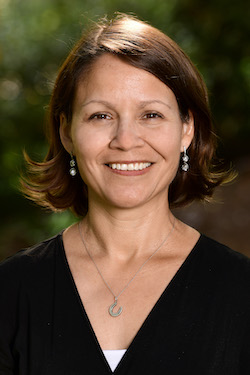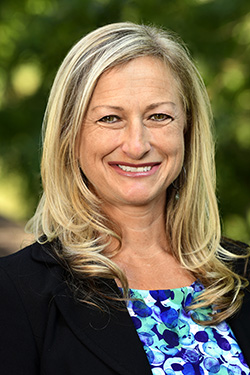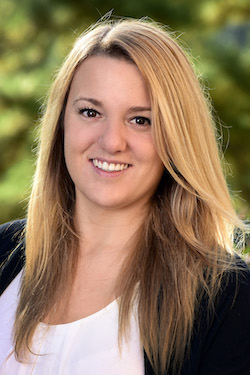SRP Funding Opportunities Webinar
Sponsored by: NIEHS Superfund Research Program
Archived: Monday, July 23, 2018
2018-07-23
NIEHS Superfund Research Program
The Superfund Research Program (SRP) is holding a webinar to provide information about the new "Superfund Hazardous Substance Research and Training Program (P42)" funding opportunity, RFA-ES-18-002. The RFA was released on July 3, 2018, and the application deadline is December 19, 2018.
On the webinar, NIEHS staff will provide information and answer questions about the P42 RFA to address the broad, complex health and environmental issues that arise from the multimedia nature of hazardous waste sites. SRP Center grants support problem-based, solution-oriented research Centers that consist of multiple, integrated projects representing both the biomedical and environmental science disciplines. The Center cores are tasked with administrative, community engagement, research translation, research support, and training functions.
The webinar will also focus on changes from previous solicitations. For more information about the RFA, see the SRP Funding Opportunities – Multiproject Center Grants page.
Accessibility, Recording, and Content Disclaimer
Rehabilitation Act Notice for Reasonable Accommodation
It is EPA's policy to make reasonable accommodation to persons with disabilities wishing to participate in the agency's programs and activities, pursuant to the Rehabilitation Act of 1973, 29 U.S.C. 791. Any request for accommodation should be made to Sara Amolegbe at 919-213-4906 or samolegbe@michaeldbaker.com, preferably one week or more in advance of the webinar, so that EPA will have sufficient time to process the request. EPA would welcome specific recommendations from requestors specifying the nature or type of accommodation needed. Please note that CLU-IN provides both alternate phone call-in options and closed captioning for all webinars, and requests for these specific accommodations are not necessary.
Webinar Recording
By participating in this CLU-IN webinar, you automatically agree to authorize recording of audio and visual content presented during this live event and consent to subsequent use of this recording in the public domain by the U.S. Environmental Protection Agency. This recording may include questions, comments and poll responses provided by you during the live event in addition to your name, voice, image or likeness. This recording will be made available after the conclusion of the live event as part of the CLU-IN webinar archives, and will remain available indefinitely. If you do not wish to consent to the recording, please do not join the live event, and contact Jean Balent at 202-566-0832 or balent.jean@epa.gov to discuss your concerns.
Content Disclaimer
This webinar is intended solely to provide information to the public. The views and opinions expressed as part of this webinar do not necessarily state or reflect those of the U.S. Environmental Protection Agency. It is not intended, nor can it be relied upon, to create any rights enforceable by any party in litigation with the United States, or to endorse the use of products or services provided by specific vendors. With respect to this webinar, neither the United States Government nor any of their employees, makes any warranty, express or implied, including the warranties of merchantability and fitness for a particular purpose, or assumes any legal liability or responsibility for the accuracy, completeness, or usefulness of any information, apparatus, product, or process disclosed, or represents that its use would not infringe privately owned rights.
Presenters:
 Janice Allen, Ph.D., Scientific Review Branch, National Institute of Environmental Health Sciences (allen9@niehs.nih.gov or 984-287-3232)
Janice Allen, Ph.D., Scientific Review Branch, National Institute of Environmental Health Sciences (allen9@niehs.nih.gov or 984-287-3232)
Janice Benson Allen, Ph.D., received her undergraduate degree at the University of North Carolina - Chapel Hill in chemistry/biology and her Ph.D. at North Carolina State University College of Veterinary Medicine (NCSU-CVM) in cell biology and biotechnology. Her research area concentrated on the pathogenesis of inflammation, with a focus in in vitro/in vivo models of acute and chronic inflammation, cytokines and growth factors, oxidative stress, and transcriptional factors/regulation of gene expression.
Allen worked at the NIDDK and NIDCR in Bethesda, Md., as an intramural chemist prior to serving as a faculty member at the NCSU-CVM. Allen mentored several undergraduate and graduate students and postdoctoral fellows while at the NIH and NCSU-CVM. She has been a scientific review officer for NIEHS since 2002. In this position she is responsible for the initial administrative, scientific, and technical review of research grant and fellowship applications and contracts assigned to NIEHS before forwarding them to outside consultants for detailed peer review. She assures that a uniform interpretation of NIH grant/contract policies and procedures is given both to applicants and review consultants, and prepares summary statements of review committee findings and recommendations.
 Lisa Archer Edwards, Scientific Review Branch, National Institute of Environmental Health Sciences (archer@niehs.nih.gov or 984-287-3258)
Lisa Archer Edwards, Scientific Review Branch, National Institute of Environmental Health Sciences (archer@niehs.nih.gov or 984-287-3258)
Lisa A. Edwards has a B.S. in mathematics from North Carolina Central University and an M.B.A. from the University of Phoenix. Lisa joined the Division of Extramural Research and Training in 1988 as a student trainee in the Review Branch. After working as a student, Lisa was hired permanently as a grants technical assistant. Lisa worked in this position until December 1994. After a four year absence from the government, Lisa returned to the Review Branch in January 1999, and has since served in several positions within the DERT. In 2003, Lisa joined the Grants Management Branch as a specialist where she served as leader on the Ruth L. Kirschstein National Research Service Awards, worked on varies career award mechanisms, and other research grants. In 2011, Lisa was promoted to grants management team lead, and manages and oversees a team of four junior specialists. In addition, she is the senior specialist for the Superfund Basic Research Grant portfolio, which involves large, multidisciplinary programs as well as research program grants and small business innovation research grants.
 Danielle J. Carlin, Ph.D., D.A.B.T., NIEHS Superfund Research Program (danielle.carlin@nih.gov)
Danielle J. Carlin, Ph.D., D.A.B.T., NIEHS Superfund Research Program (danielle.carlin@nih.gov)
Danielle Carlin, Ph.D., D.A.B.T., is a health scientist administrator with the NIEHS Superfund Research Program (SRP). Her position consists of providing guidance and advice to grantees applying for SRP Center grants and serving as the lead liaison between SRP trainees and the various training opportunities offered by SRP. Her current research interests include chemical mixtures, combined exposures, metals, asbestos, and xenobiotic metabolism. Dr. Carlin conducted her postdoctoral training at the University of North Carolina, where she first studied aerosolized drugs/vaccines for treatment and prevention of tuberculosis for two years and then focused on the toxicological effects of exposure to Libby amphibole asbestos in the rat model. She received her Ph.D. in 2005 from Kansas State University, College of Veterinary Medicine, Department of Anatomy and Physiology. She also has a B.S. and M.S. in animal science from New Mexico State University.
 Michelle L. Heacock, Ph.D., NIEHS Superfund Research Program (heacockm@niehs.nih.gov)
Michelle L. Heacock, Ph.D., NIEHS Superfund Research Program (heacockm@niehs.nih.gov)
Michelle Heacock, Ph.D., is currently serving as the acting branch chief of the Hazardous Substances Research Branch, and is a health science administrator where she oversees Superfund Research Program (SRP) grants that span basic molecular mechanisms of biological responses from exposures to hazardous substances, movement of hazardous substances through environmental media, detection technologies, and remediation approaches. Dr. Heacock received her doctorate from Texas A&M University for her work on the interplay between DNA repair proteins and telomeres. Her postdoctoral work was conducted at NIEHS where she studied the DNA repair pathway, base excision repair. She has been with the NIEHS since 2007.
 Heather F. Henry, Ph.D., Program Administrator, NIEHS Superfund Research Program (heather.henry@nih.gov)
Heather F. Henry, Ph.D., Program Administrator, NIEHS Superfund Research Program (heather.henry@nih.gov)
Heather Henry, Ph.D., is a health science administrator for the NIEHS where she oversees Superfund Research Program (SRP) grants that spans human health toxicology, risk assessment, detection technologies and remediation approaches. She provides guidance to potential applicants for SRP’s Multiproject Center Grants (P42s), Individual Research Grants (R01s), Small
Business / Technology Transfer Grants (R41-44; SBIR/STTR), and Conference Grants (R13). Heather studied plant-based environmental remediation
(phytoremediation) and ecological restoration as part of her doctoral work at the University of Cincinnati and as a Fulbright Postdoctoral Fellow at the University of Melbourne and University of Adelaide in Australia. She has been with NIEHS since 2006.
 William Suk, Ph.D., M.P.H., Superfund Research Program, National Institute of Environmental Health Sciences (suk@niehs.nih.gov or 984-287-3325)
William Suk, Ph.D., M.P.H., Superfund Research Program, National Institute of Environmental Health Sciences (suk@niehs.nih.gov or 984-287-3325)
William Suk, Ph.D., M.P.H., is director of both the Superfund Research Program (SRP) and the Hazardous Substances Research Branch in the NIEHS Division of Extramural Research and Training. Suk has served as director of the SRP, a program established by Congress as part of the reauthorization of Superfund in 1986, since its inception. The SRP fosters interdisciplinary research approaches to address the problems associated with potentially hazardous environmental exposures. His affiliation with a number of organizations and committees include: Roundtable on Environmental Health Sciences, Research, and Medicine, Institute of Medicine, National Academy of Sciences; International Advisory Board of the Chulabhorn Research Institute, Bangkok, Thailand; and World Health Organization Consultation on Scientific Principles and Methodologies for Assessing Health Risks in Children Associated with Chemical Exposures. He is also a member of a number of trans-NIH committees. He received his Ph.D. in microbiology from the George Washington University Medical School, and his master's in public health in health policy from School of Public Health at the University of North Carolina at Chapel Hill.
 Brittany Trottier, Superfund Research Program, National Institute of Environmental Health Sciences (brittany.trottier@nih.gov)
Brittany Trottier, Superfund Research Program, National Institute of Environmental Health Sciences (brittany.trottier@nih.gov)
Brittany Trottier received her Master's in Public Health from George Washington University and her BA in Chemistry from Adrian College. She is currently a Health Specialist with the Superfund Research Program (SRP) at the NIEHS. For the SRP, she is the lead for the CareerTrac system, oversees the community engagement cores, is co-lead for the NIEHS-WHO Coordinating Center (WHOCC) e-waste focus area, and supports the lead for the children's environmental health focus area for the NIEHS WHOCC.
Moderator:
 Danielle J. Carlin, Ph.D., D.A.B.T., NIEHS Superfund Research Program (danielle.carlin@nih.gov)
Danielle J. Carlin, Ph.D., D.A.B.T., NIEHS Superfund Research Program (danielle.carlin@nih.gov)
Danielle Carlin, Ph.D., D.A.B.T., is a health scientist administrator with the NIEHS Superfund Research Program (SRP). Her position consists of providing guidance and advice to grantees applying for SRP Center grants and serving as the lead liaison between SRP trainees and the various training opportunities offered by SRP. Her current research interests include chemical mixtures, combined exposures, metals, asbestos, and xenobiotic metabolism. Dr. Carlin conducted her postdoctoral training at the University of North Carolina, where she first studied aerosolized drugs/vaccines for treatment and prevention of tuberculosis for two years and then focused on the toxicological effects of exposure to Libby amphibole asbestos in the rat model. She received her Ph.D. in 2005 from Kansas State University, College of Veterinary Medicine, Department of Anatomy and Physiology. She also has a B.S. and M.S. in animal science from New Mexico State University.
Webinar Slides and References:
Webinar Slides and References:
Additional Resources:
If you have a suggested topic or idea for a future CLU-IN internet seminar, please contact:
Technology Integration and Information Branch
PH: 202-566-0832 | Email: balent.jean@epa.gov
Technology Integration and Information Branch
PH: 202-566-0875 | Email: adam.michael@epa.gov





